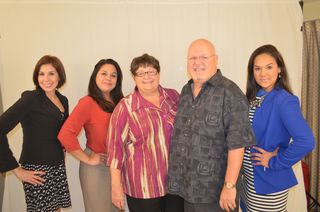Many lawyers counsel clients to make distributions to beneficiaries at certain ages. Typically it’s distributed one-third at 25, one third at 30 and one third at 35 or some variation thereof. This is a mistake on many levels.
 In fact, when properly examined, it’s contrary to most clients’ goals. Many clients’ primary goal with staged distributions is to “protect” the assets for the beneficiary. Jane was a client with only one son who was going to inherit all of her $750,000.00. She was concerned about his ability to manage it so she asked me to distribute it in staged distributions so he had time to come to understand how to manage it.
In fact, when properly examined, it’s contrary to most clients’ goals. Many clients’ primary goal with staged distributions is to “protect” the assets for the beneficiary. Jane was a client with only one son who was going to inherit all of her $750,000.00. She was concerned about his ability to manage it so she asked me to distribute it in staged distributions so he had time to come to understand how to manage it.
After Jane died her son, Bob, was disappointed to learn that his mom “didn’t trust him”. I shared with Bob that his mom adored him but just wanted to “protect him” from his inexperience of other “good intending” people. Well the rest of the story played out and after the first five years, Bob had blown through his first distribution. When he was entitled to his second distribution he actually asked the trustee not to give it to him and asked how he can better manage it to ensure that it was protected from being lost like his first third.
When Bob was entitled to his final distribution, five years later, his portfolio had grown over seventy percent from when mom died. Today, Bob still has all his money and what it’s grown to and it’s protected from his predators and creditors.
We accomplished this by permitting distributions at the discretion of the trustee, who, by the way, was Bob, rather than forcing the distribution out. The downsides of staged distribution at different ages is that it forces the money out of the asset protection trust and makes it available to all the creditors and predators of the beneficiary. When properly designed, like for Bob, the assets can be held for the beneficiary with the beneficiary in full control of when distributions are made out of the trust to them. Not only will this assure asset protection but it will also assure all of the growth of the assets will be protected while allowing the beneficiary access to the use and benefit of the money for their entire lifetime.
In fact, when examined closely, beneficiaries usually use the trust funds to purchase assets like a home or vacation property. This subjects the new asset to the creditors and long term care costs of the beneficiary. All these risks are avoided, when the beneficiary has his separate share asset protection trust purchase the asset. Before you design a plan that forces money out of protection trusts, consider instead educating your client into how a lifetime asset protection trust with the kids in control can ultimately serve the clients’ needs.
To learn more about Asset Protection Strategies and how Irrevocable Pure Grantor Trusts meet many needs of clients not traditionally considered join us at our Asset Protection & Medicaid Practice With Purpose Program. Hotel cut off is January 12th so register today. This event will sell out!
David J. Zumpano, Esq, CPA, Co-founder Lawyers With Purpose, Founder and Senior Partner of Estate Planning Law Center







